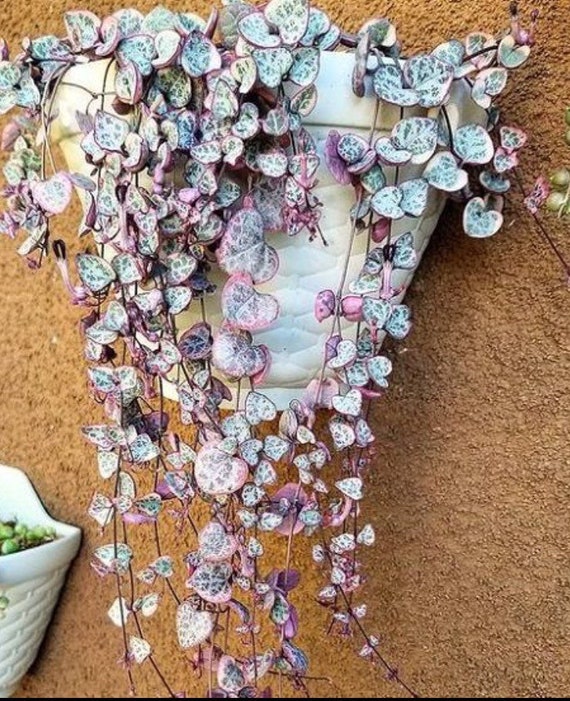

Small tubers, which look somewhat like little potatoes, form at the nodes or leaf bases along the stems – another possibility for the “beads” that give rise to the common name of rosary vine. With the tangled, trailing branches that can grow several feet long hanging down, the regularly spaced leaves resemble a row of large beads.

.jpg)
In other species the leaves may be rudimentary or absent, or may be thick, fleshy and succulent. They are dark green marbled with silver on the upper surface and green to purple on the underside. The simple, opposite heart-shaped leaves are 1-2 cm wide and long. The stems can also be trained up a small trellis or topiary frame. The stringy, purplish stems are vining or trailing, making this best grown as a hanging plant. woodii, like many other species in this genus, is a straggly evergreen climber that in its native habitat would scramble up through other vegetation. The pink or purple stems bear many heart-shaped leaves.Ĭ. woodii, along with chain of hearts, collar of hearts, and hearts entangled (because the stems easily enmesh). Rosary vine is another commonly used name for C. Plants in this genus have many other colorful common names including bushman’s pipevine, lantern flower, necklace vine, parachute flower, and wine-glass vine. The species name honors John Medley Wood (1827-1915), who collected native African plants after he retired from the East Indian Merchant Service. The genus name was given by Linneaus to describe his interpretation of the appearance of the flowers as fountains of wax from the words keros, meaning wax, and pege meaning fountain. Native to southern Africa, from Zimbabwe to eastern South Africa, this tender perennial plant in the milkweed subfamily (Asclepiadoideae) of the dogbane family (Apocynaceae) is sometimes classified as C. String of Hearts, Ceropegia woodii, is just one of many species in the genus Ceropegia that are grown as ornamental houseplants.


 0 kommentar(er)
0 kommentar(er)
